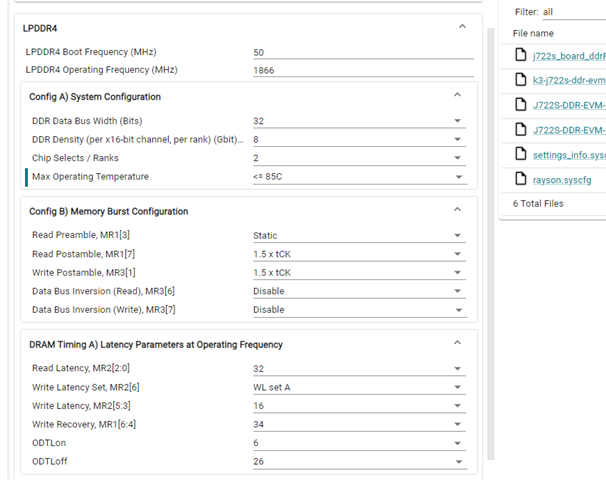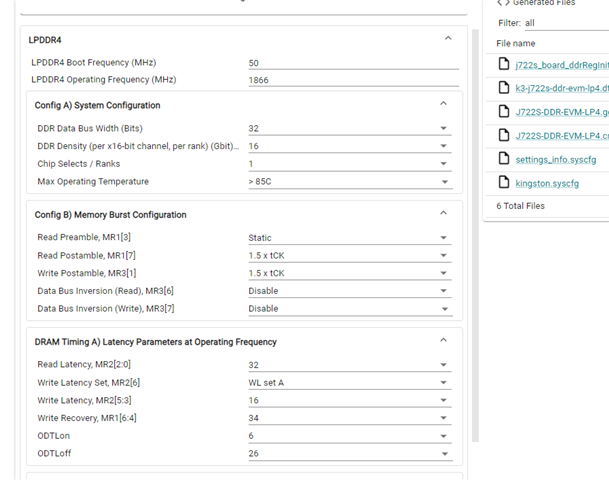Other Parts Discussed in Thread: SYSCONFIG
Tool/software:
Hello,
We built a custom board with different 4GB DDR memory. Not 8GB DDR at J722SEVM.
I' have creates the EDGE-AI images using the Linux and RTOS SDKs and setting the memory addresses correctly.
The problem is this:
Most of the time, the kernel boots, and I can access the terminal screen via HDMI and use Linux. But very rarely, 2 times totally, the EDGE-AI App Gallery screen appeared. As I said, mostly, it just displays the Linux terminal.
I don't understand why the EDGE-AI App Gallery randomly works. I'm using the same image everytime, and this is a strange thing. I can't explain this randomness.
When App Gallery doesn't appear, it says some Qt elements are missing or invalid .so files are existed. Why would these files be deleted or corrupted?
Could it be related to the DDR configuration?




